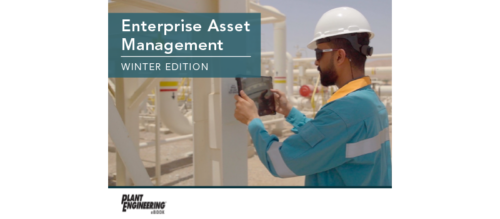Integration bus: Here to help
Manufacturing benefits from improved information exchange. Enterprise service bus (ESB) architectures and and their use were described in last month's column. ESB architectures can be valuable tools within the manufacturing control environment. A manufacturing integration bus (MIB) is an ESB designed for information exchange among manufacturing applications, including SCADA, MES, LIMS (laborat...
Manufacturing benefits from improved information exchange. Enterprise service bus (ESB) architectures and and their use were described in last month’s column. ESB architectures can be valuable tools within the manufacturing control environment. A manufacturing integration bus (MIB) is an ESB designed for information exchange among manufacturing applications, including SCADA, MES, LIMS (laboratory information management systems), data historians, asset management systems, warehouse management, and CAPA (corrective and preventive action) systems.
MIBs provide valuable tools for manufacturing IT. They decouple manufacturing applications, simplify business-to-manufacturing integration, improve manufacturing system security, and handle enterprise resource planning system communication failures.
Several existing manufacturing standards enable MIBs, including ISA 95 Enterprise/Control System Integration, WBF B2MML (business to manufacturing markup language), and OPC-UA (unified architecture). The ISA 95 Integration standard defines the terminology for typical information exchanges about material, personal, equipment, production schedules, and production responses. The WBF B2MML is an XML implementation of the ISA 95 Integration standard that defines the exact format for representing exchanged information. OPC-UA is a vendor-independent message transport mechanism.
Also needed for an MIB are two emerging standards: the ISA 95 Business to Manufacturing Transaction standard and the WBF Version 4 B2MML release that supports the transactions. The ISA 95 Transaction standard defines message transactions that can be used for MIB Web services. The services have three methods for information exchange:
-
A pull method, where applications ask owners for data;
-
Push methods, where applications push new and changed data to data owners; and
-
Publish/subscribe methods, which allow multiple applications to keep information synchronized.
WBF Version 4 B2MML is the XML implementation of the ISA 95 Transaction standard. It also is consistent with the business-industry OAGIS (Open Applications Group interface standard) 9.0 specification and the UN/CEFACT (United Nations Center for Trade Facilities and Electronic Business) core components.
The WBF schemas define the formal structure for MIB Web services data. OPC-UA defines a platform independent transport mechanism for XML messages and defines vendor neutral methods for interfacing to the MIB. Applications would use OPC-UA to exchange messages between clients and servers over various types of networks. Servers define the object models that can contain server-defined data types. OPC-UA also defines standard services for servers. Two transport mechanisms, TCP and SOAP using HTTP, are defined in the initial OPC-UA documentation.
The MIB is both an OPC-UA client and a server. It is a client for owners of data, and it is a server of that data to other clients. Manufacturing and business applications that are providers of data would register with the MIB the data classes that they provide (such as personnel, material, production schedules, etc.) and what services are provided for the data. The methods and data structures that define the registration information are described in the ISA 95 Transaction standard and the OPC-UA definitions.
An MIB also solves two other major manufacturing IT problems: security and ERP communication failures. An MIB server placed within a manufacturing zone eliminates direct business-to-control-system communication and associated security holes. When the MIB also includes data caching, then it handles failures in ERP communication. If the ERP system or other business systems are unavailable, then critical manufacturing systems can operate from cached data. The MIB would subscribe to all registered business data and would cache published changes. When an application pulls data, the MIB would respond with local cache data. MIBs can be constructed using open source or commercially available tools and industry-standard elements, such as XSLT, JMS (Java Message System), SOAP, HTTP, B2MML, and OPC-UA. Consider an MIB as the core backbone for manufacturing application integration during a manufacturing IT update.
| Author Information |
| Dennis Brandl, brandl@brlconsulting.com , is president of BR&L Consulting, Cary, N.C., which is focused on manufacturing IT. |
Do you have experience and expertise with the topics mentioned in this content? You should consider contributing to our CFE Media editorial team and getting the recognition you and your company deserve. Click here to start this process.



